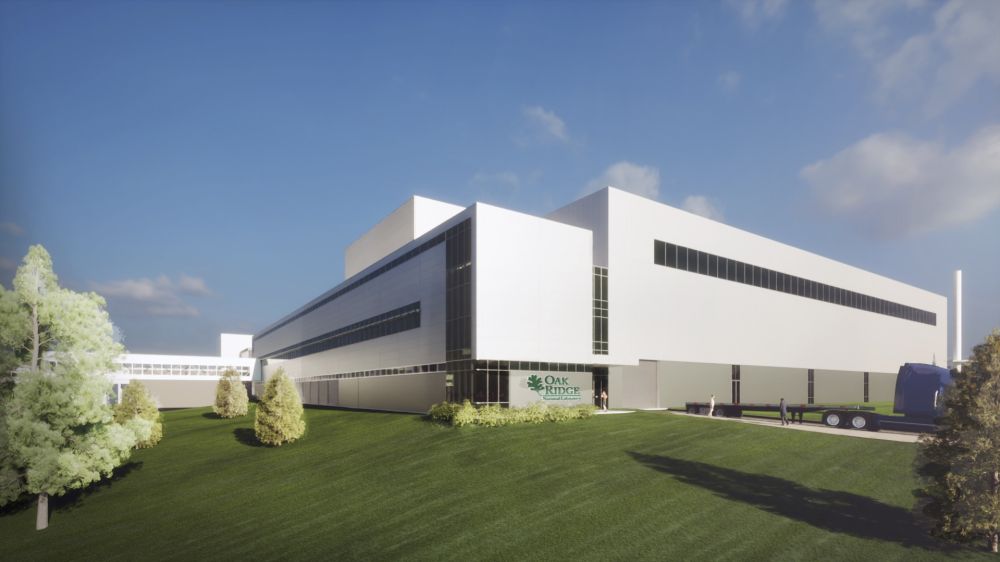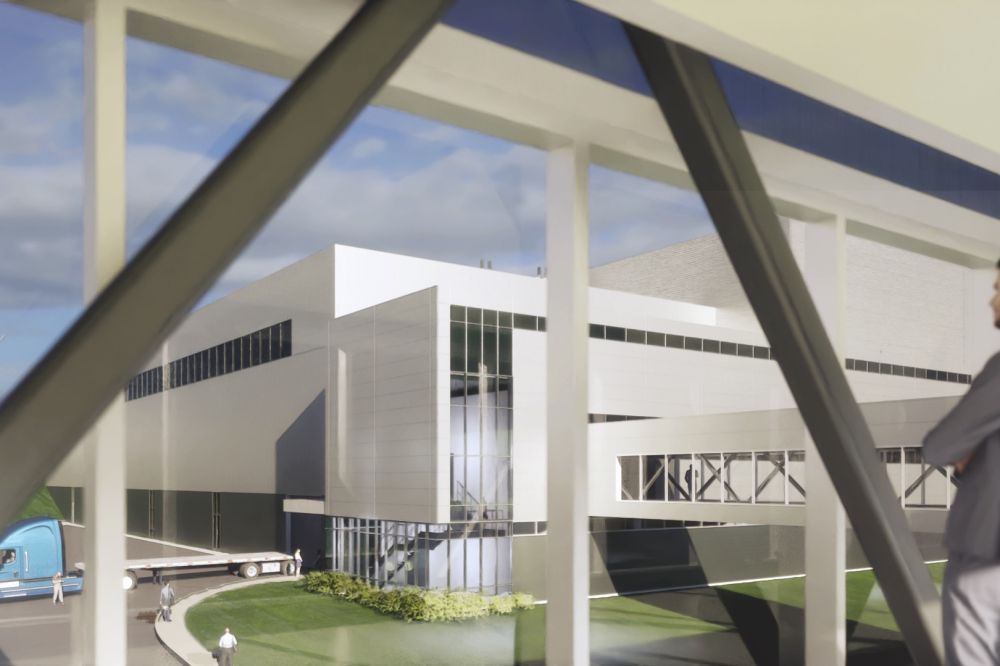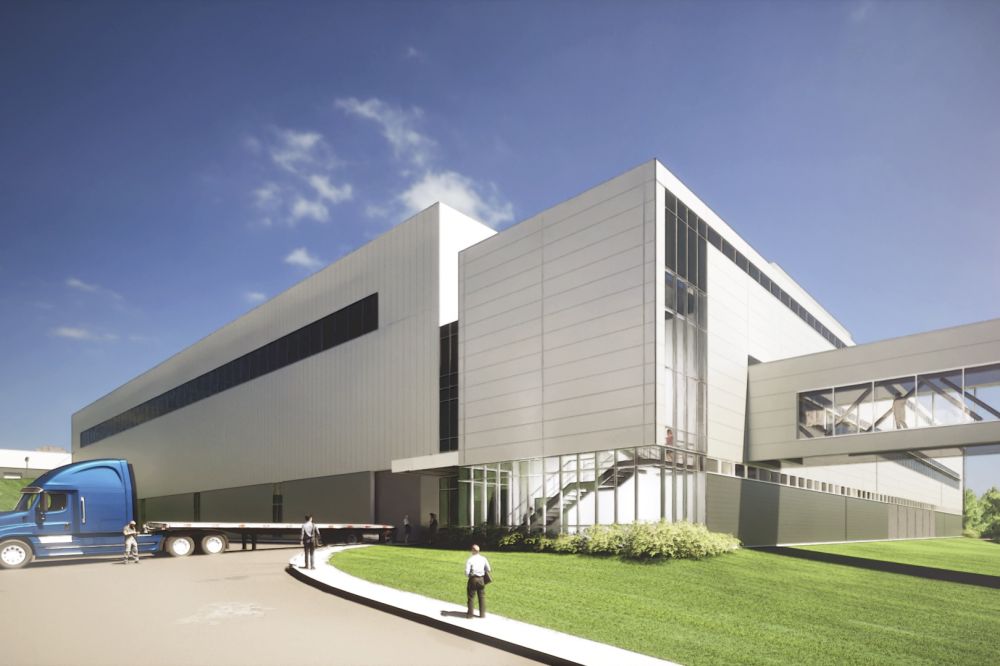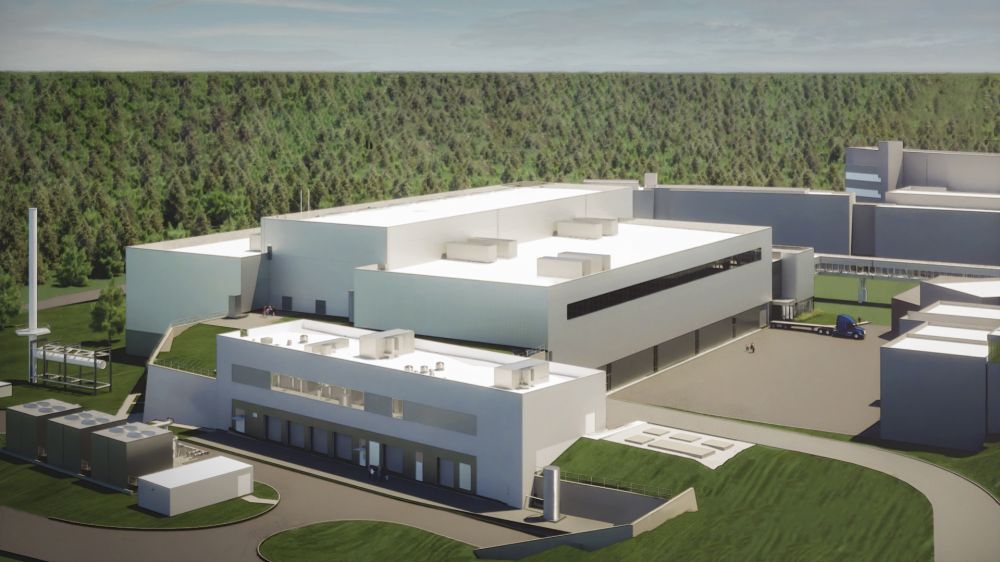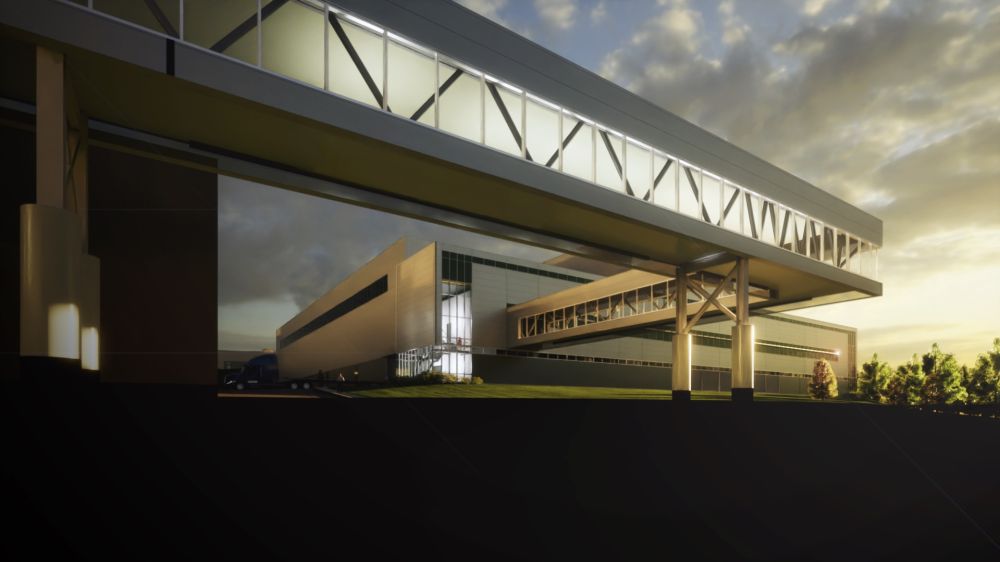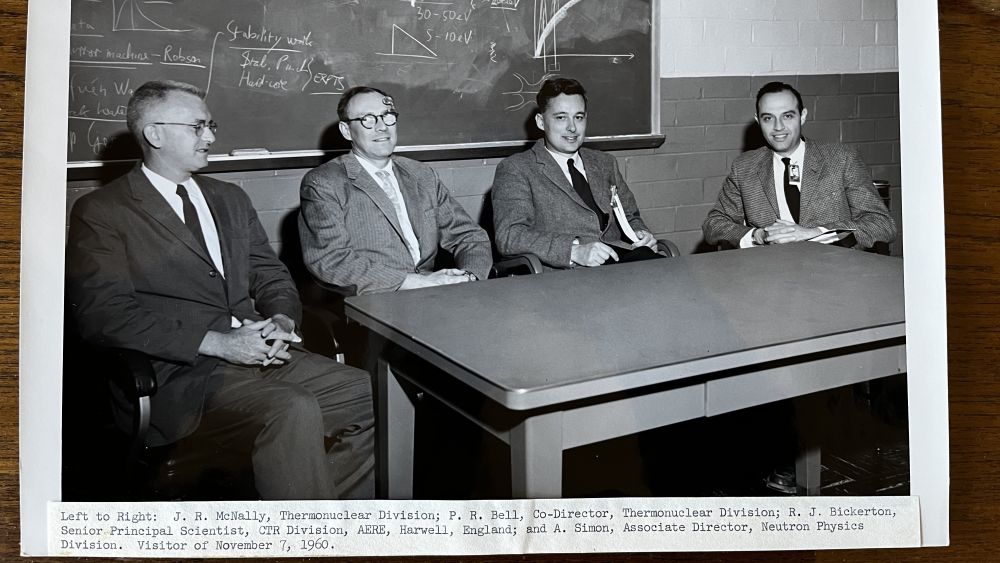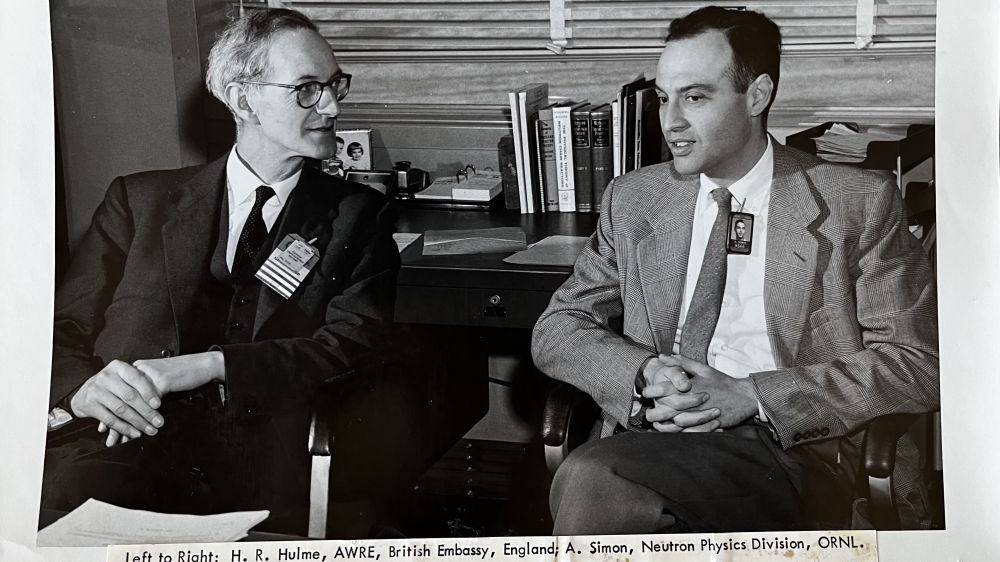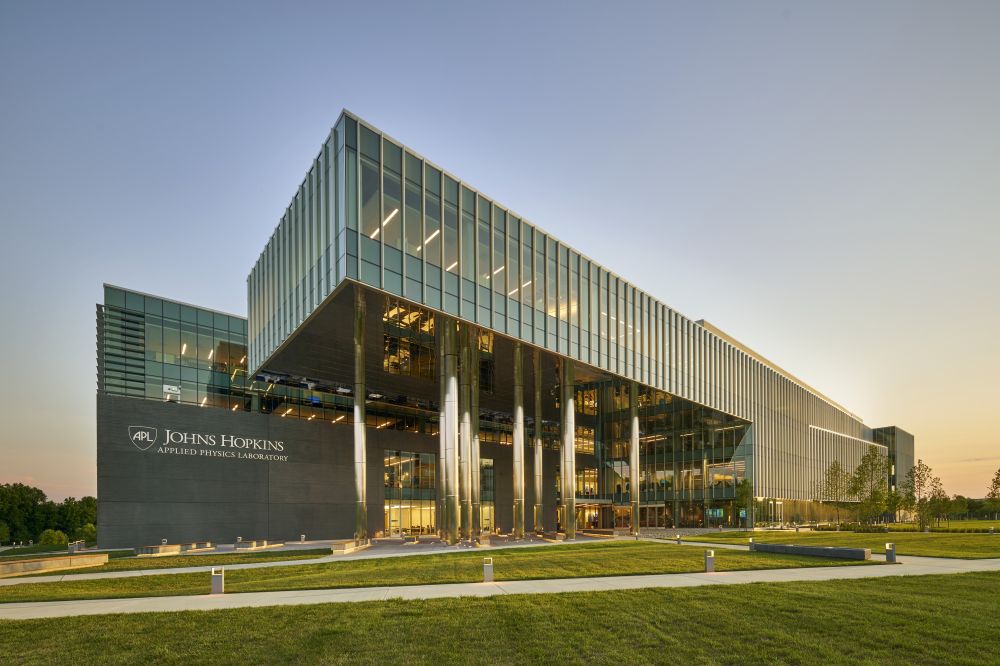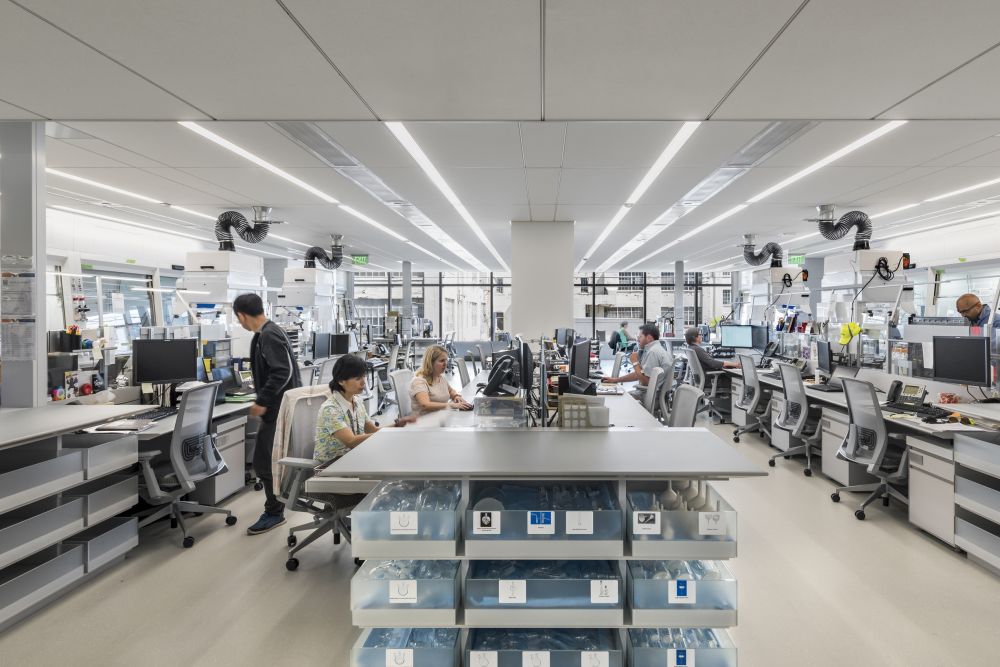Designing for the next 80 years at Oak Ridge National Laboratory
Hillary Simon
April 1, 2024
Social Sharing
Everything we do, everything we touch, everything we see is science. Everything in life can be broken down into atoms or molecules. And for many, the molecular level is where science is most thrilling — where theories are proven, innovations are created, and the mysteries of the universe begin to be solved.
The “thrill” of atoms and particles beats strong at Oak Ridge National Laboratory (ORNL), an incredible institution we’ve been fortunate to work with for more than 15 years. Our earliest work with ORNL included the Maximum Building Energy Efficiency Research Laboratory (MAXLAB) and the Chemical and Materials Sciences Building. Principal David Polzin, who has worked with ORNL since 2007, compares ORNL scientists to surgeons in healthcare. “They are wicked smart, and the client knows what they want and need,” said David. "They are spatial thinkers and are very attuned to dimensions and scale. It’s humbling in a way to be part of their process.”
This year, ORNL celebrates 80 years of bringing revolutionary experiments and solutions to society. Famous initially for its research on splitting uranium atoms and The Manhattan Project, ORNL is a hub for breakthrough science. Following the end of World War II, ORNL, code-named “Site X”, became a training ground for hundreds of workers, including many chemists and engineers, who were developing the fields of nuclear engineering and isotope separation. It was impressive work then, and it was just the beginning.
Scientists at ORNL, a premier multi-purpose science national laboratory through the Department of Energy (DOE), are tackling some of the world’s most complex challenges, including the discovery and development of clean and efficient energy sources, improving national security modalities such as cybersecurity, delivering world-leading nuclear science and engineering, and beyond. So much of what we take for granted (i.e., phones, cars) exists because of scientific research done at ORNL.
The Second Target Station
Currently, our team is designing the Second Target Station (STS) at ORNL, one of the largest DOE science construction projects. There are only a few of these highly complex target station facilities in the world. Ken Herwig, technical director of the STS project and a scientist at ORNL, says that when complete, the STS could provide more robust ways to research some of today's major materials science topics such as quantum materials, energy production, storage and use, carbon dioxide capture and sequestration. In the energy domain, this research includes developing more efficient and safer batteries, lighter materials and longer-lasting energy-use materials.
These are labyrinthine challenges that, when deciphered, will have a profound impact on society.
How is that possible? According to Herwig, it’s all about neutrons. Neutrons tell us where atoms are and what they’re doing. Herwig describes them as essential probes of materials that indicate fundamental knowledge about how material is put together. Using neutrons and neutron scattering, scientists are able to gather unique information about how atoms are organized and how they move in materials we use every day. At the STS, they’ll be able to use longer wavelength neutrons, which will provide faster and deeper insight into some of the materials that are important to the way we live our lives, like clean energy, lightweight materials and more effective medicines.
ORNL operates two existing neutron facilities: the High Flux Isotope Reactor (HFIR) and the Spallation Neutron Source (SNS). The STS is an upgrade to the SNS, and provision for it was planned since before SNS was built. It will complement both existing neutron sources, allowing measurements to be taken faster and on smaller samples, accelerating the pace of discovery.
Neutron production at STS begins with an accelerator that produces a very high-power proton beam with protons moving at about 88.5% the speed of light. The proton beam is directed onto a heavy tungsten target where the protons deposit a large amount of energy into the metal nucleus which breaks apart, thereby generating neutrons. This process, called spallation, efficiently generates the abundance of neutrons necessary for performing critical research. Next, the neutrons are cooled (slowed down) and then captured in beam guides which direct the neutrons towards samples. The neutrons interact with atoms in the sample and are scattered towards detectors which record their location and time of arrival.
Testimonials
As the design architect in partnership with Burns & McDonnell, our CannonDesign team is working closely with ORNL scientists to understand exactly what is needed to optimize research in the new facility. When completed, the STS will host about 1,000 engineers and scientists annually. Integral to the design of the STS is large, complex equipment that, due to the nature of the work occurring in the facility, can emit radiation — so our design includes ample safety and protection measures to protect scientists from possible exposure.
Steve Blair, CannonDesign’s Science & Technology practice director, has worked with ORNL and the DOE for decades and has a deep respect for the scientists who work in these spaces. “What stands out to me is that the building is the experiment,” says Steve. “It's all one and the same. It's not like we're going to build a building, and then they bring this piece of equipment in. No, we're putting in all the special power, all the special cooling, all the special shielding, and the scientists are adding different components that they're designing and creating. Some of these components have never been created before, so it's all one great big experiment. The passion from some of the scientists and the excitement is enthralling.”
Sarunas Rumsa, CannonDesign’s project director for the STS also has a long history of working with ORNL and other DOE facilities. He takes the time to truly understand what the scientists are trying to achieve and to determine how our design can help bring their goals to fruition.
Testimonials
Jeff Murray, also representing CannonDesign, recognizes the historical role the design team is playing and takes its significance to heart. “A lot of architects will dismiss an industrial building like this because they tend to not be aesthetically beautiful,” says Jeff. “We understand that architecture is secondary compared to what’s going on inside, but that doesn’t mean it can’t be a beautiful industrial building. We want to get this right — and the ORNL staff appreciates that.”
Currently in the schematic design phase, the team is implementing all the necessities the ORNL team requires. For example, the building structure must be sized to accommodate neutron beamlines of different lengths. Why different beamline lengths? To allow scientists to calculate the velocity of the neutrons from measurement of the time it takes them to travel to the detectors. Of course, the building must be designed to withstand any natural disaster. Another major design consideration is accommodating the extensive and complex equipment. “We’re designing the facility that encloses the machinery, so getting it right the first time is vital. We’re talking 10 feet of carbon steel bars, 21-24 inches of concrete, and a foundation that had to hold 250,000 tons,” said Blair.
“The building is the experiment.”
Ken Herwig and his staff feel like they are being heard by the design team — that CannonDesign is listening. “They’re very skilled and easy to work with in terms of on-the-fly discussions. That’s always been impressive. As architects, they have always been able to gain enough understanding of the future function of these buildings so they can propose solutions that can help us optimize usage of space and save money,” said Herwig.
Acknowledging that his role in the STS project is a once-in-a-generation opportunity, Herwig envisions the next generation of scientists will discover extraordinary breakthroughs, such as more effective and accessible uses of renewable energy, the key to moving away from fossil fuel-powered transportation, as well as better technologies for batteries and energy storage. The trail that ORNL has blazed over the past 80 years will undoubtedly lead to remarkable discoveries over the next 80 years — and beyond.
The Second Target Station is predicted to open in 2034.
Author Hillary Simon is a communications specialist for CannonDesign. She is also the proud granddaughter of the late Dr. Albert Simon, who was the associate director of the Neutron Physics Division at ORNL from 1950-1960.
